+86-0523-83274900
+86-151 9064 3365
The Fire Hose Coupling is a special metal connector used to quickly and reliably connect the fire hose to other firefighting equipment (such as water guns, water pumps, water source interfaces, etc.). It plays a key role in fire rescue and firefighting operations, ensuring smooth water flow, firm connection, and reliable sealing, thereby improving the efficiency and safety of firefighting operations.
Main functions:
Connection function:
The connection function plays a core hub role in the entire fire water supply system. Through the connector, the fire hose can be quickly and reliably connected to water sources, water pumps, fire hose guns and other equipment to ensure the smooth delivery of firefighting water. For example, in the early stage of firefighting, the fire pump delivers the pressure water from the water source to the hose through the connector; at the end of firefighting, the connector connects the hose to the water gun so that firefighters can accurately control the water column for spraying and extinguishing.
In addition, when the fire scene is large or the distance of the hose needs to be extended, multiple sections of the hose can be connected through the connector to flexibly form a longer water supply pipeline. This highly adaptable connection capability enables the fire brigade to flexibly build a water source delivery system according to the actual needs of the fire scene.
Sealing function:
This is the key to ensuring the safe and efficient operation of the water supply system. Fire hose joints are usually designed with high-strength sealing rings or gaskets to enhance the air tightness between the hose and the joint. Whether it is high-pressure water supply or long-term continuous operation, these sealing components can effectively prevent water leakage and splashing, ensuring stable water flow output.
Once the joint leaks, it will cause water waste at the least, and pressure drop at the worst, affecting the efficiency of fire extinguishing. Therefore, the sealing materials used in the joints usually have good high temperature resistance, corrosion resistance and aging resistance, and are suitable for high temperature, high pressure, and easily polluted fire environments, thereby improving the reliability and safety of the overall system.
Rapid deployment and recovery:
The situation at the fire scene is urgent, and the speed of fire extinguishing is directly related to the safety of personnel and property. Therefore, fire hose joints usually adopt convenient design structures, such as snap-on, plug-in or rotary locking structures, which can achieve quick docking and disassembly. When in use, firefighters can complete the laying of the hose and the connection of the equipment in a short time, and quickly establish a fire water supply system.
After the operation is completed, the hose and connector can also be quickly disassembled, which is convenient for equipment sorting and reuse. This fast and efficient deployment and recovery capability not only improves the efficiency of firefighting operations, but also reduces the labor intensity of firefighters, especially in high-rise buildings, urban roads or complex outdoor environments, and has extremely important practical value.
Structural composition:
The Fire Hose Coupling is generally composed of the following main components:
The first part of the Fire Hose Coupling is the male and female heads, also known as male and female heads, which are the key components for the connector to achieve connection. The male head is usually used as the insertion end and the female head is used as the receiving end. The two are connected by corresponding structural designs. Common connection methods include rotary, snap-on and quick-insert. These structures are designed to achieve fast, efficient and firm connections, adapting to rapid deployment and high-pressure water delivery in emergency situations. Its standardized design also ensures compatibility with equipment such as fire pumps, water guns, bolts, etc.
The second part is the tail pipe, which is the socket for the Fire Hose Coupling to connect to the hose body. The shape design of the tail pipe directly affects the firmness and pressure resistance of the connection. Common structures include serrated tail ends and ribbed tail ends. The serrated tail is fixed with an aluminum ring crimping, which is suitable for occasions where high-strength connections are required; while the ribbed tail is usually tied with wire, which is easy to install and suitable for field or temporary deployment. These surface structures increase the friction with the inner wall of the hose, effectively preventing the hose from falling off or loosening during use.
The third key component is the sealing ring, which is usually installed at the connection gap inside the joint. The sealing ring is mostly made of highly elastic rubber or synthetic materials, with good high pressure resistance, high temperature resistance and corrosion resistance. Its function is to prevent the joint from leaking at the connection, especially in the case of high-pressure water delivery or continuous operation. The sealing ring can effectively ensure smooth water flow and no leakage, and is the core guarantee component of the sealing performance of the entire joint.
Finally, there is the locking structure, which is an important design to ensure stable and reliable joint connection. Some advanced or quick-type Fire Hose Couplings are equipped with special locking mechanisms, such as bayonet positioning grooves, flange buckles or pin-type quick locks. The purpose of these structural designs is to quickly lock the connector after docking to prevent the connector from loosening or falling off due to pressure fluctuations, hose pulling or improper operation. In emergency rescue, mobile operations and other occasions, the presence of the locking structure greatly improves the safety and continuity of system operation.
Classification by tail pipe shape:
Sawtooth tail pipe type:
The tail pipe surface of this connector has a clear sawtooth structure, and the sawtooth design can enhance the bonding force with the fire hose. When connecting, the hose needs to be put on the outside of the tail pipe to ensure that the hose completely covers the sawtooth part. Subsequently, the hose and tail pipe are mechanically pressed and fixed by an aluminum pressure ring, and the aluminum ring tightly presses the hose and the sawtooth tail pipe to make them firmly combined. Due to the dual fixing effect of the sawtooth and the pressure ring, this connection method is very stable and can withstand high water pressure. It is often used in high-pressure fire hose systems to ensure the safety and stability of hose connections in harsh environments.
Ribbed tail pipe type:
This type of tail pipe has one or more raised ribs on the surface to increase the friction and fixing effect with the hose. When connected, the hose is also put on the outside of the tail pipe to completely cover the ribs. The fixing method mainly relies on wire binding. By tightly wrapping the binding wire, the hose is firmly tied to the ribbed tail pipe. This method is easy to operate and is particularly suitable for rapid on-site construction and temporary connection needs. Ribbed tail pipes are usually used for medium and low pressure fire hoses, or as a temporary fixing solution in the field and emergency situations, saving tools and easy to disassemble and replace.
Common materials:
The first is aluminum alloy, which is the most commonly used material for fire hose joints. Aluminum alloy has the advantages of light weight, high strength, and strong corrosion resistance, which can meet the needs of high-frequency and rapid deployment of firefighting operations. Whether it is field operations, urban firefighting or high-altitude operations, the use of aluminum alloy joints can significantly reduce the burden on firefighters and improve mobility and efficiency. At the same time, aluminum alloy also has good processing performance and thermal conductivity, and is suitable for various standardized production processes, so it is widely used in conventional firefighting equipment.
The second is brass, whose biggest advantage lies in its superior mechanical properties and extremely strong wear resistance. Brass joints can withstand higher pressure loads and frequent opening and closing operations, and are particularly stable in high-pressure hoses or key connection parts. The brass material itself also has good oxidation resistance, is not easy to rust, and can maintain the sealing and firmness of the connection parts for a long time. Therefore, in some occasions with higher safety requirements, such as industrial firefighting, special equipment or fixed sprinkler fire extinguishing systems, brass connectors are more common.
Finally, stainless steel is known for its excellent corrosion resistance and chemical stability, especially suitable for special working conditions such as moisture, salt spray, marine climate or chemical environment. Stainless steel connectors can resist the erosion of moisture, acid and alkali substances and corrosive media for a long time, and can maintain good working condition even in extremely harsh environments. Although stainless steel connectors are relatively heavy and cost more than other materials, their long service life and strong environmental adaptability make them irreplaceable in special application fields such as offshore fire boats, seaside storage, petrochemical enterprises and corrosion-prone areas.
Application scenarios:
Daily firefighting operations of urban fire departments
Fire Hose Couplings are widely used in daily firefighting operations of urban fire departments, and are an important part of connecting water hoses with water pumps, water guns, fire hydrants and other equipment. Its quick connection and high sealing enable urban fire brigades to quickly carry out firefighting operations in complex environments such as high-rise buildings, streets, and basements. Standardized interface design also ensures the versatility and collaborative combat capability of various fire-fighting equipment.
Firefighting systems in factories, warehouses and other places
Fire Hose Couplings are also indispensable components in fixed fire-fighting systems in industrial places such as factories and warehouses. These places are usually equipped with fire hose reels, hose boxes and sprinkler systems. Connectors are used to connect and deploy hoses to ensure that effective initial firefighting can be quickly organized in the event of a fire. Especially in warehouse areas where flammable items are stored, high-strength connectors are essential to ensure the stability of high-pressure water supply.
Forest firefighting and outdoor emergency water supply
In the field of forest firefighting and outdoor emergency water supply, Fire Hose Couplings need to cope with challenges such as rugged terrain and long-distance water delivery. Lightweight and durable aluminum alloy connectors have become the mainstream choice, which can quickly build water hose pipelines and improve outdoor rescue efficiency. At the same time, its structural design should take into account the convenience of carrying and reuse, and adapt to complex and changeable natural environments such as mountains, grasslands, and ditches.
Temporary water supply systems such as construction and agricultural irrigation
Fire Hose Couplings are often used as temporary water supply connection equipment at construction sites and in agricultural irrigation systems. During the construction process, water hoses need to be temporarily laid to reduce dust, clean or prevent fire; while agricultural irrigation requires regular connection to water sources for field irrigation. The quick plug-in and easy installation characteristics of this connector greatly improve its operational flexibility and efficiency in these applications, and reduce the difficulty of on-site operation.
In professional firefighting equipment in high-risk areas such as ports and oil depots
In professional firefighting equipment in high-risk areas such as ports, oil depots, and chemical parks, Fire Hose Couplings undertake higher standards of safety assurance tasks. These areas have a high risk of fire and explosion, and have extremely high requirements for the stability, corrosion resistance and sealing of the water supply system. Stainless steel or brass connectors are more common, ensuring efficient water delivery and rapid deployment under high temperature and oil and gas environments, meeting the needs of professional firefighting and high-pressure water supply.
Basic connection methods of Fire Hose Couplings
The connection operation of Fire Hose Couplings mainly includes two key parts: the connection between the water hose and the connector and the connection between the connectors, which together constitute a complete fire water supply system.
Connection method of hose and joint
The tail pipe part of the fire hose joint usually adopts two main connection methods, namely the aluminum ring crimping of the serrated tail pipe joint and the wire binding connection of the ribbed tail pipe joint. These two methods differ in structure, use environment and installation tools. Users can choose the most suitable connection method according to the actual use scenario.
1. Connection of serrated tail pipe joint (aluminum ring crimping type)
This method is suitable for the connection needs of medium and high pressure hoses. Due to its reliable fixation and strong pressure resistance, it is widely used in high-intensity use environments such as urban fire protection and industrial sites. The specific operation process is as follows: First, put the tail end of the hose on the outside of the joint tail pipe to ensure that the serrated structure on the surface of the tail pipe is completely covered. Next, put the pre-prepared aluminum pressure ring on the outside of the hose and align it with the serrated part of the tail pipe.
Use a special ring pressing machine or crimping tool to apply force evenly, radially compress the aluminum ring, so that it fits tightly between the hose and the tail pipe, and realizes the bite and locking of the toothed structure and the hose. Finally, check whether the pressure ring is tightened, the connection is not loose, and the aluminum ring surface is free of cracks or deformation. This method has the significant advantages of excellent sealing performance, high tensile strength and long service life. It is one of the most reliable connection methods in high-pressure water supply systems.
2. Rebar tail end joint (wire binding) connection
The ribbed tail end joint (wire binding) connection method is more suitable for medium and low pressure environments, especially for field operations, emergency rescue, temporary water supply and other scenarios. Its installation method is relatively simple: First, tightly wrap the tail end of the hose around the outside of the ribbed tail pipe to ensure that the hose mouth is neat and completely covers the rib area. Then, use a special steel wire (binding wire) to wrap around the outside of the water hose 2 to 3 times. The binding position should fall accurately on the groove of the tail pipe rib to enhance friction. Then use pliers to tighten the two ends of the steel wire and flatten the end of the steel wire to prevent scratches on the hands or affect the safety of operation.
After the installation is completed, the binding should be carefully checked to see if it is firm to prevent loosening or slipping during use. The advantages of this method are simple operation tools and fast installation speed, which is especially suitable for emergency occasions with limited resources or requiring rapid deployment.
Connection method between connectors
The connection between Fire Hose Couplings usually adopts a male (male) and female (female) matching structure, which is the basis for ensuring reliable docking between hoses, hoses and water guns, water pumps, and fire hydrants. Common connection methods include thread rotation, snap lock and quick plug connection. Users can flexibly choose according to the type of equipment and operation requirements.
Before connecting, first confirm whether the male and female structures of the two connectors are correctly matched, and ensure that their specifications and models are consistent to avoid connection failure or sealing failure. At the same time, the connection surface and internal structure of the connector should be cleaned to remove dust, sand or other impurities to prevent foreign matter from entering and affecting the sealing of the sealing ring and causing water leakage.
Next, insert the male head into the female head and operate according to the specific type of connector-if it is a threaded connection, it should be rotated clockwise until the connector is tightened; if it is a snap-on type, the connector needs to be pushed in and rotated or pressed to ensure that it is locked in place. For quick-plug connectors, the operation is more convenient. Usually, you only need to insert the male connector to the bottom and hear a "click" to confirm that it is locked in place.
In addition, if the connector has a built-in seal (most standard connectors are equipped with it), the operator should check the condition of the seal before connection to ensure that it is not aged, damaged or shifted to maintain good sealing performance.
The last step is to check the firmness of the connection. You can test whether the connector is fully locked by gently pulling the connector to ensure that it will not accidentally fall off or loosen during high-pressure water supply. This is not only related to the continuity of water supply, but also to the safety of on-site operations.
Precautions
First, the sealing ring inside the joint must be checked before each connection operation. The sealing ring is a key component to ensure that the joint does not leak during the water supply process. Once it is aged, damaged, detached or deformed, it is easy to cause water pressure drop or water leakage, and in severe cases it may even affect the fire extinguishing effect. Therefore, before operation, you should carefully confirm whether the sealing ring is intact and should replace it in time if necessary.
Secondly, you should prevent the wrong connection or forced docking between different types of joints. For example, there are differences in thread specifications and interface sizes between imperial and metric joints. Forced docking not only fails to form a good seal, but may also damage the joint parts. Before connecting, check the joint model, specifications and standards to ensure that the two are compatible, especially when used across devices and brands.
After completing the joint connection, be sure to perform a light pull test. Gently pull the connected hose and joint to ensure that the joint does not loosen or slip out, and ensure that it is firmly locked. Although this step is simple, it can effectively prevent dangerous situations such as disconnection and hose rebound caused by loose connections during high-pressure water supply.
In addition, during high-pressure water supply operations, avoid sharp bending of hoses and joints. Severe bending may cause uneven force on the joint structure, resulting in leakage or rupture at the joint, and may also cause the internal sealing ring to be misaligned, affecting the sealing effect. The hose should be laid as naturally and straight as possible, especially with a large arc transition at the corner.
Finally, as a frequently used connection component, the fire hose joint needs regular maintenance and inspection. During long-term use, the joint surface may be worn and scratched, and the internal sealing ring may also age. Especially when used in a humid or corrosive environment, inspection should be strengthened. Regular maintenance can effectively extend the service life of the joint and reduce the risk of sudden failure. If the joint body is deformed or the interface is loose, it should be replaced or repaired in time to ensure that the equipment is always in good condition.
What are the differences in the maintenance and maintenance methods of fire hose joints under different climatic conditions?
There are differences in the maintenance and maintenance methods of fire hose joints under different climatic conditions, mainly reflected in antifreeze, moisture-proof, and anti-corrosion.
1. Maintenance and maintenance in cold climates
In cold areas, fire hose joints are prone to become brittle, shrink or freeze due to low temperatures, affecting their sealing and connection performance. Therefore, special attention should be paid to the following points during maintenance and care:
Antifreeze measures: When the water supply is cut off in winter, the water pump should be kept running slowly to maintain water pressure at a small flow rate to prevent the internal freezing of the hose. The frozen hose should be thawed before cleaning to avoid direct contact with ice.
Avoid low temperature shrinkage: Low temperature may cause the hose and interface to shrink, resulting in loose connection or poor sealing. Therefore, long-term exposure to the outdoors in low temperature environments should be avoided.
Antifreeze storage: The hose should be stored in a dry and ventilated warehouse with a temperature controlled between 5℃ and 10℃ to prevent material aging or embrittlement due to low temperature.
Regular inspection: Check the appearance of the hose and joints every month to check for cracks, deformation or degumming, and repair small holes or damage in time.
2. Maintenance and care in high temperature climates
In high temperature environments, fire hose joints are prone to accelerated aging, deformation or aging of the sealing ring due to high temperature, affecting their service life. Therefore, maintenance and care should include:
Avoid exposure to the sun: The hose should avoid long-term exposure to the sun to prevent the rubber sealing ring from aging or hardening.
Keep ventilation: The storage environment should be well ventilated to prevent moisture accumulation from causing rust or poor sealing of the interface.
Regular cleaning: In a high temperature environment, the hose is easy to absorb dust and impurities, affecting the sealing performance. It should be cleaned and dried in time after use.
Avoid high temperature contact: The hose should avoid contact with high temperature objects or flames to prevent the interface from being deformed or damaged due to high temperature.
3. Maintenance and care in humid climates
In a humid environment, the hose joint is prone to corrosion of metal parts or mildew of the sealing ring due to moisture, affecting its sealing and service life. Therefore, maintenance and care should include:
Moisture-proof treatment: The hose should be stored in a dry and ventilated warehouse to avoid contact with acidic and alkaline substances.
Timely drying: It should be cleaned and dried immediately after use to avoid residual moisture inside the hose causing rust or mildew of the interface.
Regular inspection: Check whether there is rust or mildew at the interface, and replace damaged parts in time.
4. Maintenance and care under normal climatic conditions
Under non-extreme climatic conditions, the maintenance and care of fire hose joints should include the following basic measures:
Regular inspection: Check whether the interface is damaged or the thread is loose, and repair or replace it in time if any problem is found.
Correct connection: Clean the interface groove and sealing parts before connection to ensure a firm connection.
Avoid heavy pressure: Avoid applying excessive pressure on the interface to prevent deformation or damage.
Cleaning and drying: Clean and dry it in time after use to avoid accumulation of dirt and moisture.
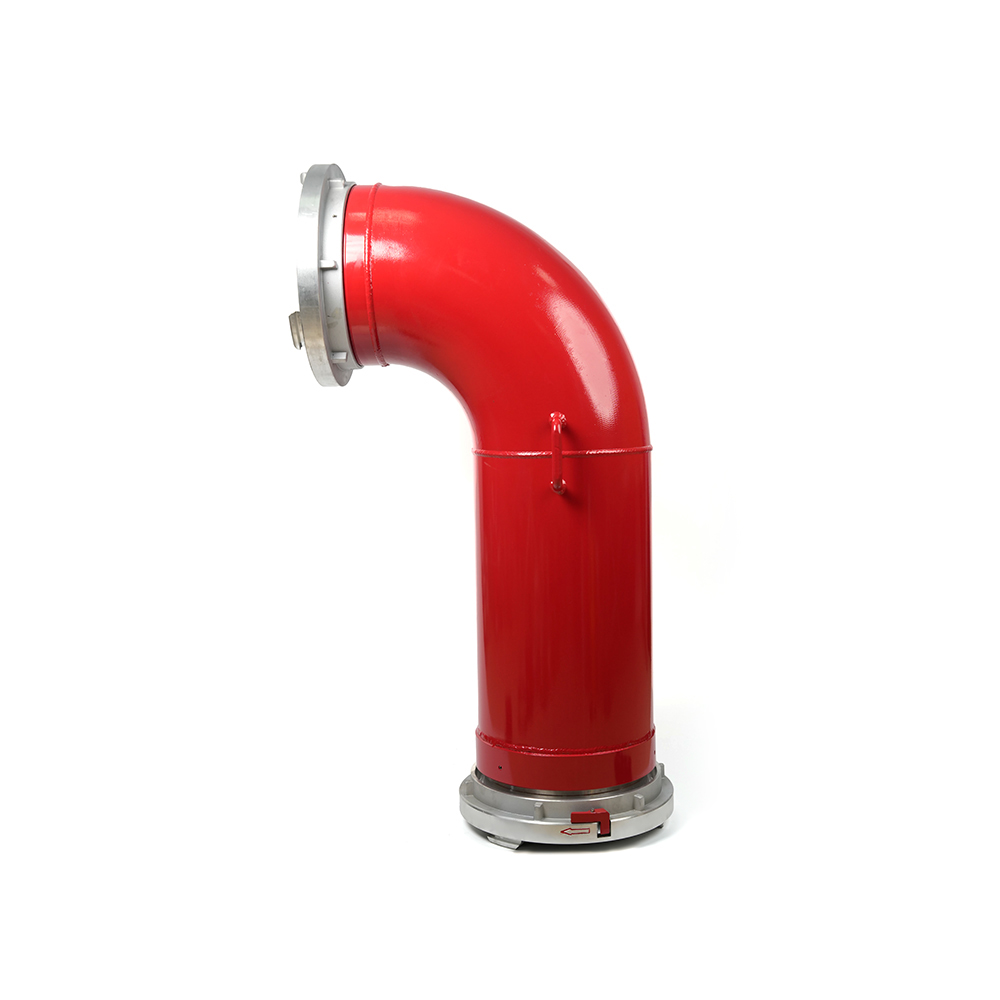 Grooved Fire Elbow-Storz
Grooved Fire Elbow-Storz
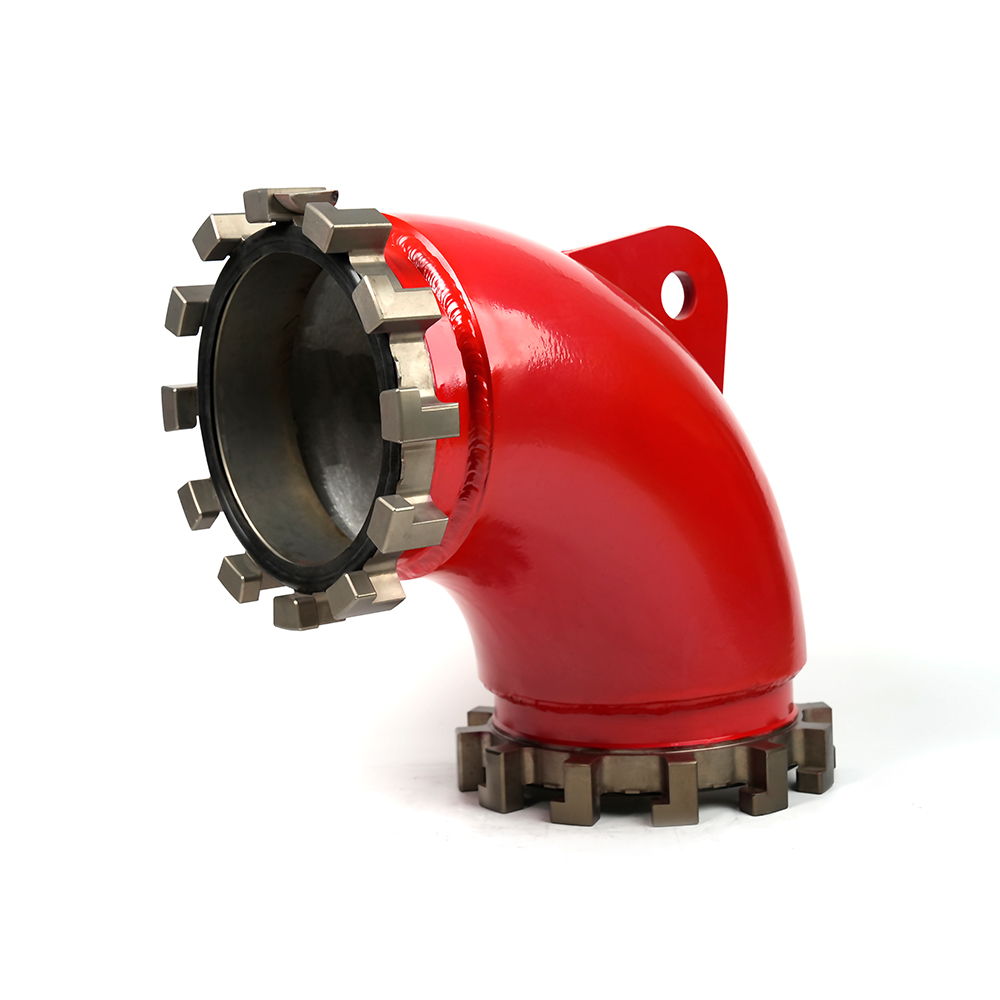 Grooved Fire Elbow-Multi-tooth
Grooved Fire Elbow-Multi-tooth
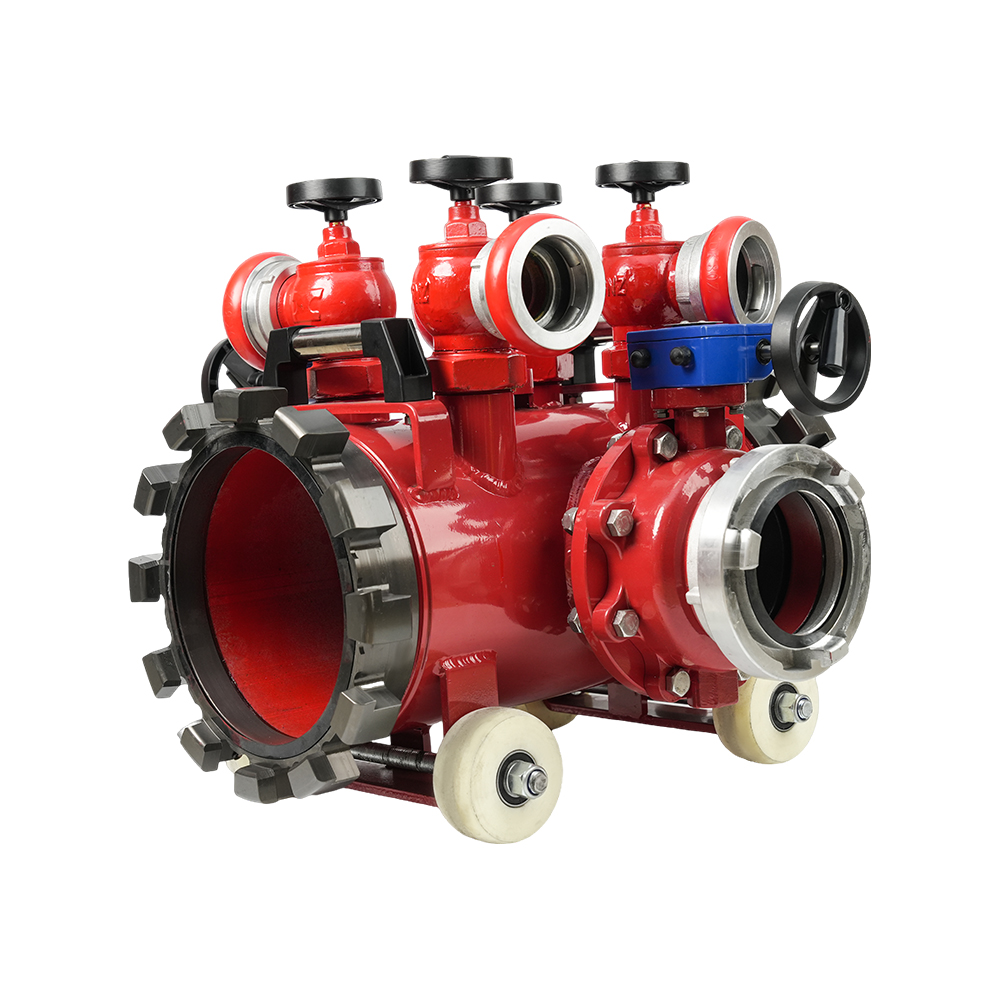 Multi-functional Fire Hose Distributor
Multi-functional Fire Hose Distributor
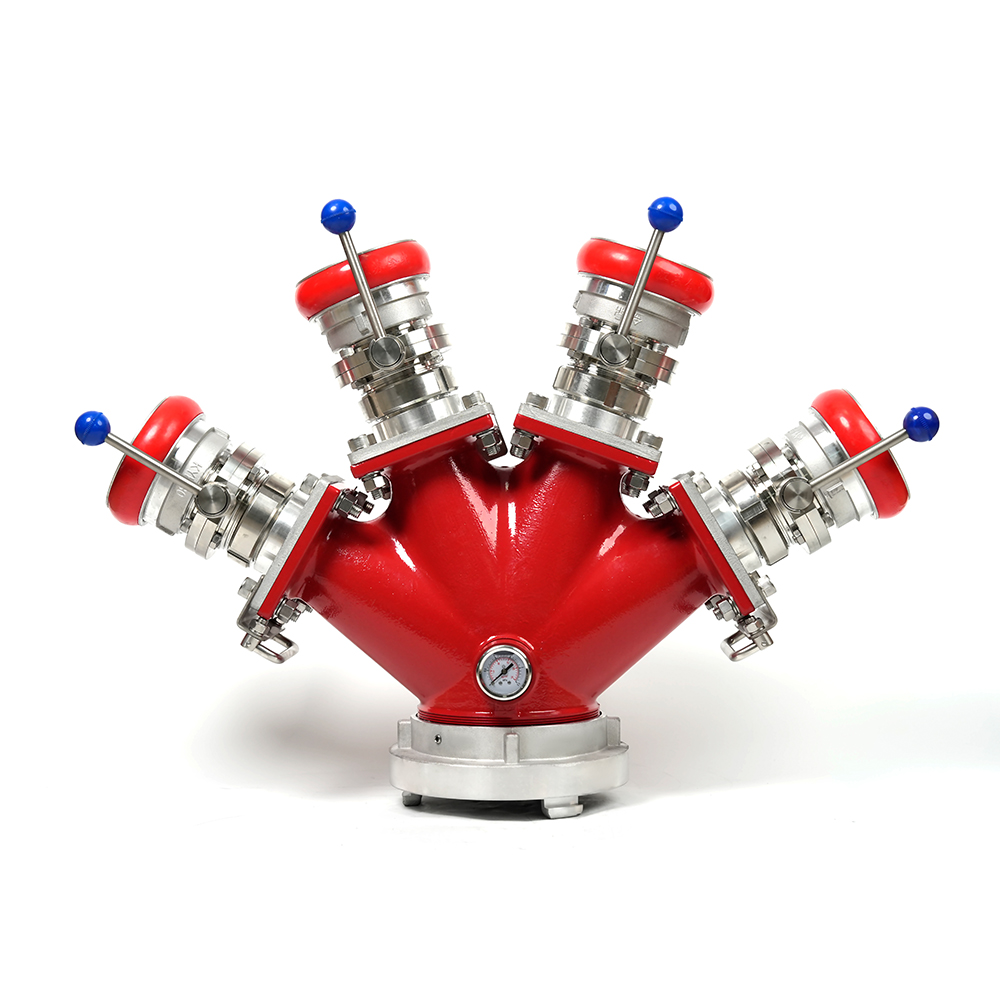 Locking Four-Way Fire Hose Distributor
Locking Four-Way Fire Hose Distributor
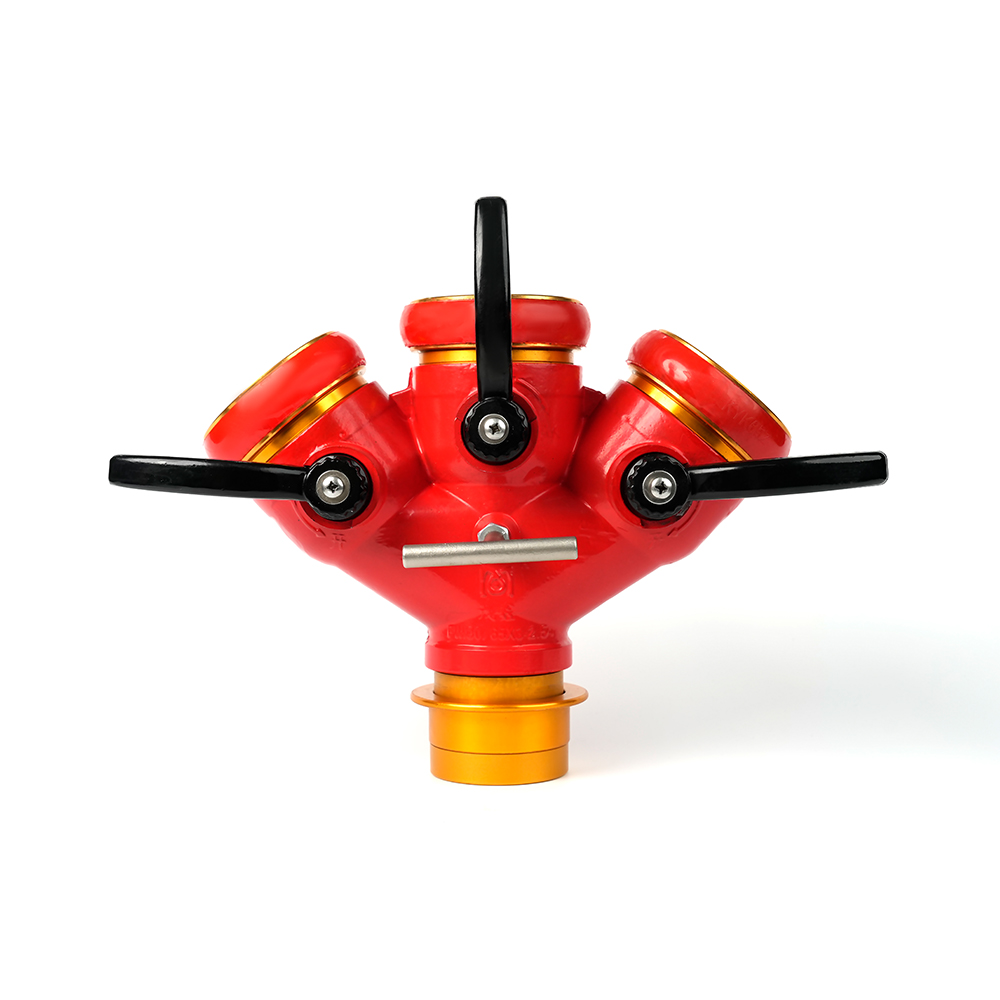 Locking Three-Way Fire Hose Distributor
Locking Three-Way Fire Hose Distributor
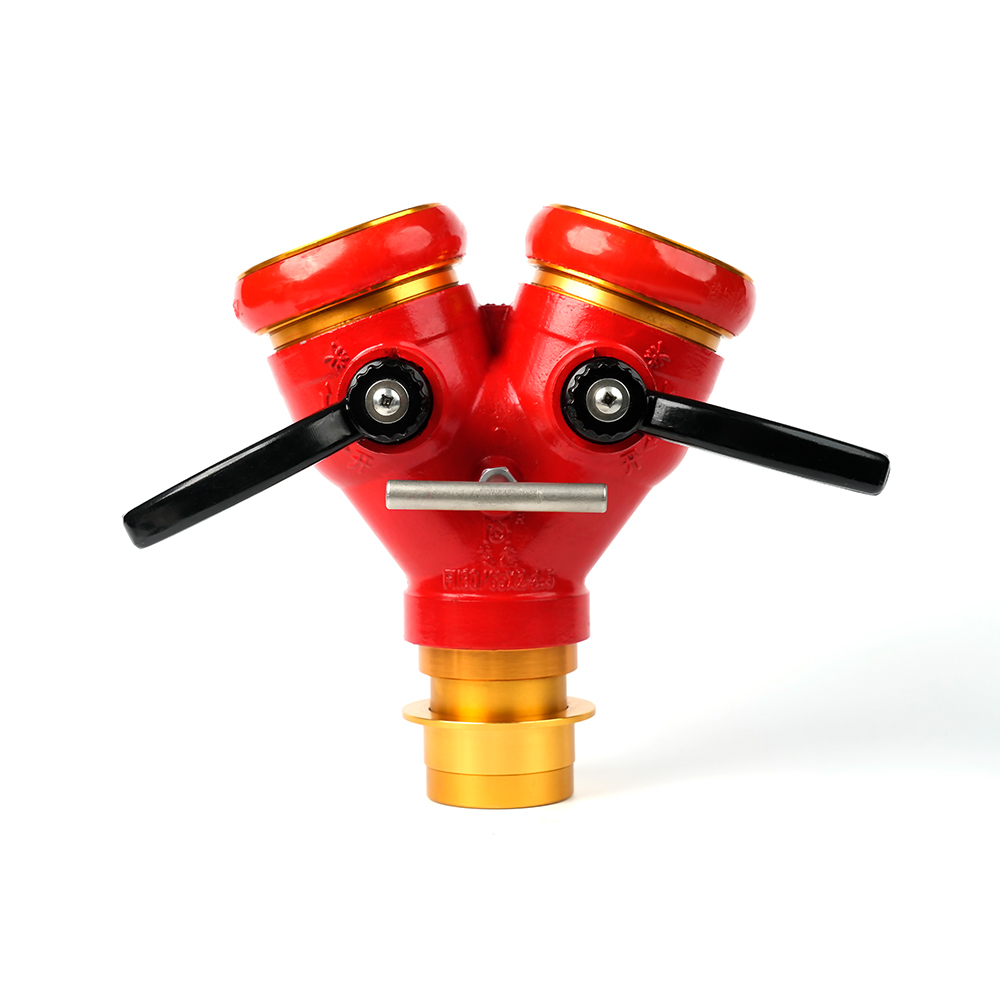 Locking Two-Way Fire Hose Distributor
Locking Two-Way Fire Hose Distributor
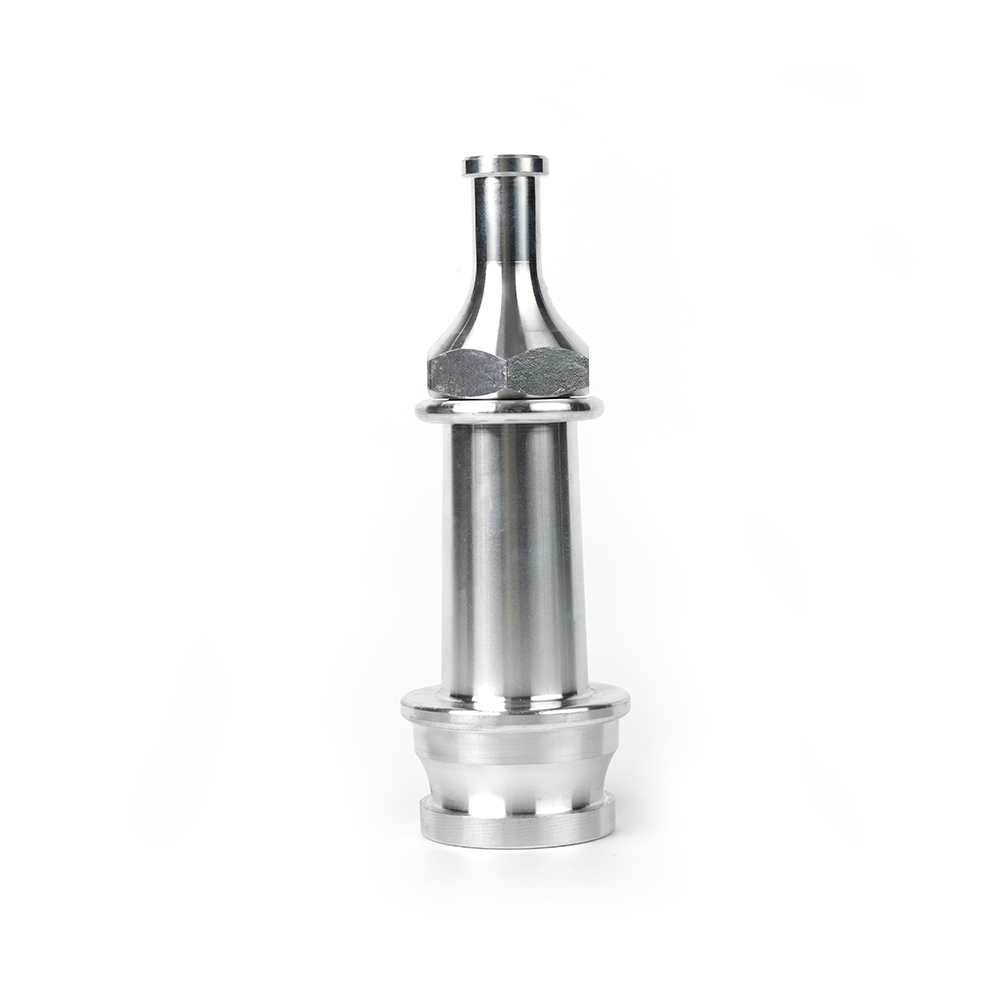 Straight Stream Nozzle
Straight Stream Nozzle
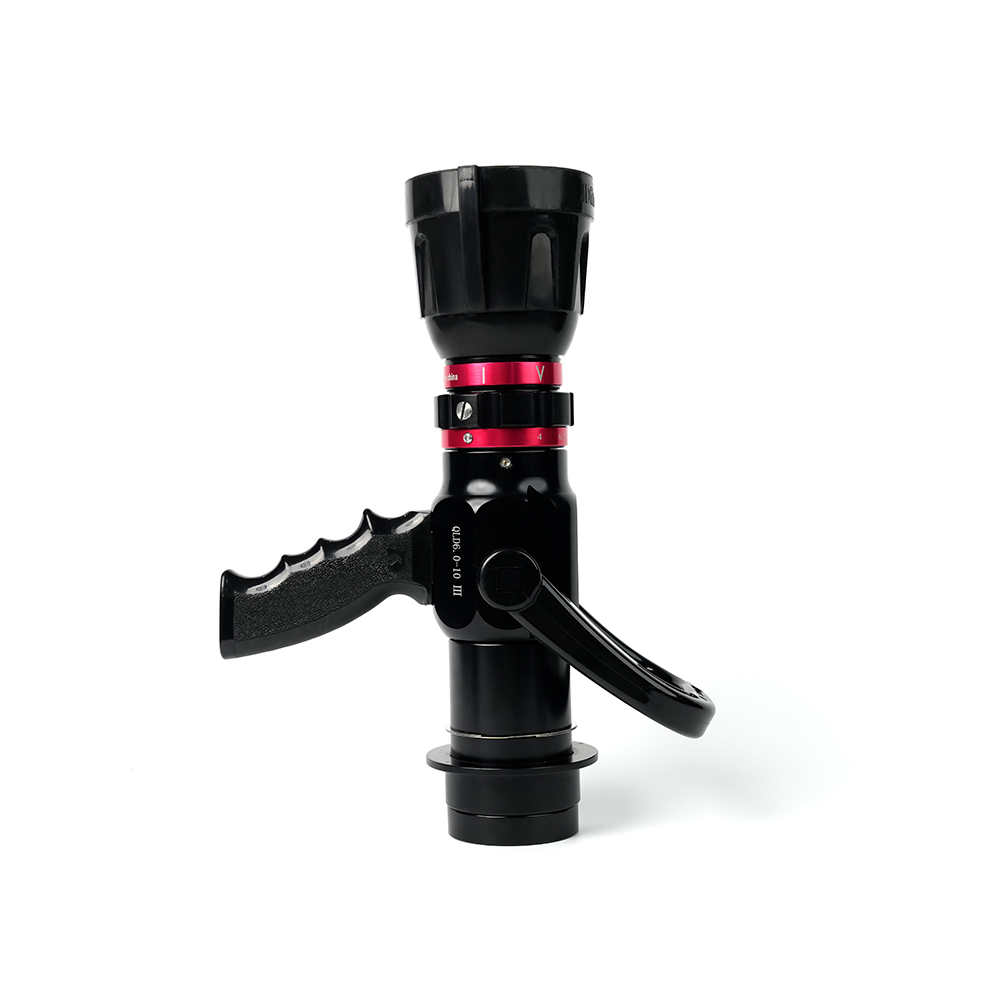 Adjustable nozzle-machino
Adjustable nozzle-machino
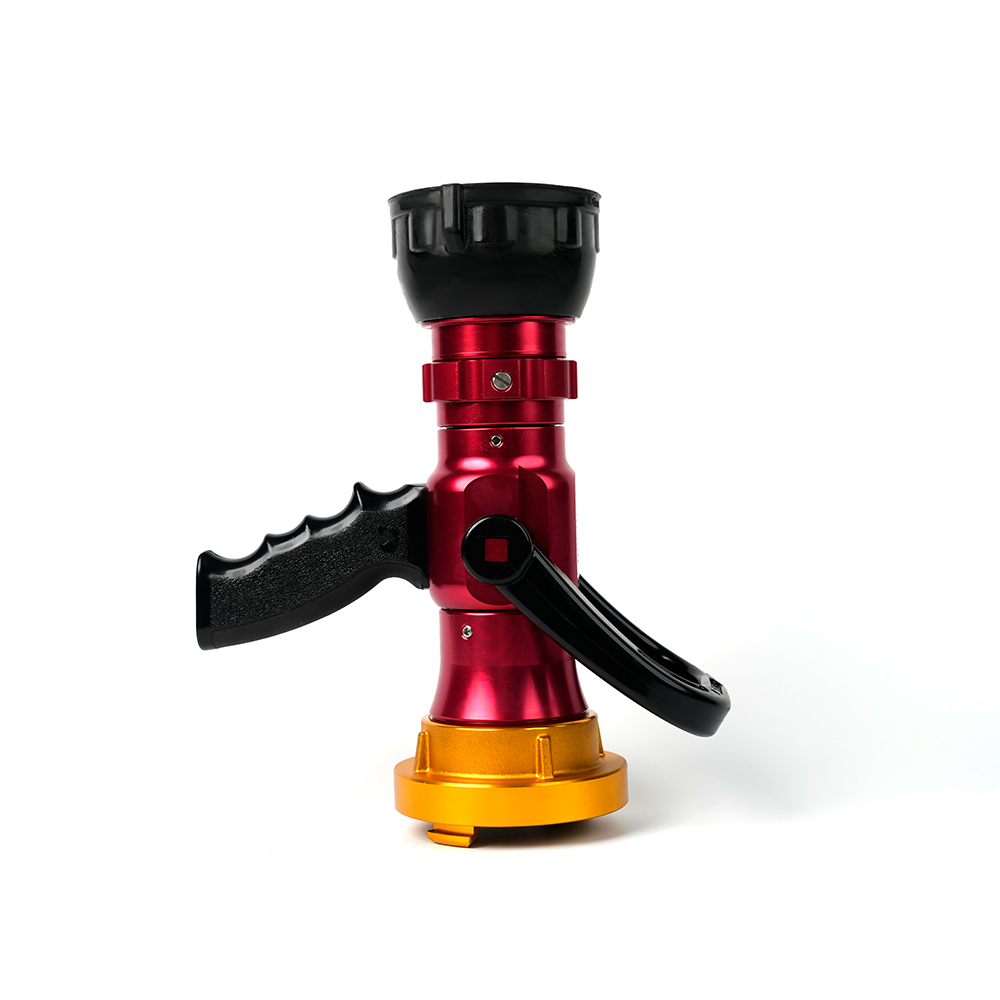 Adjustable nozzle-storz
Adjustable nozzle-storz
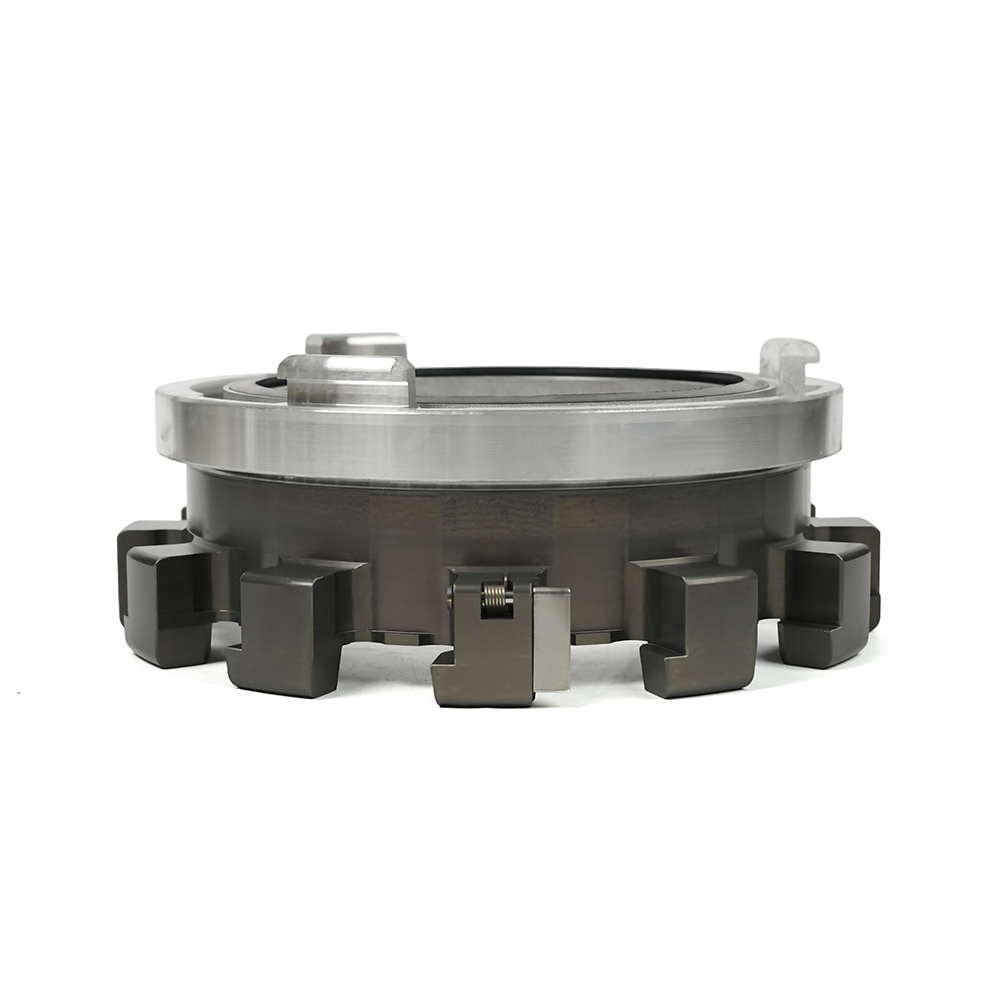 Storz Adapter Couplings - Multi-Tooth
Storz Adapter Couplings - Multi-Tooth
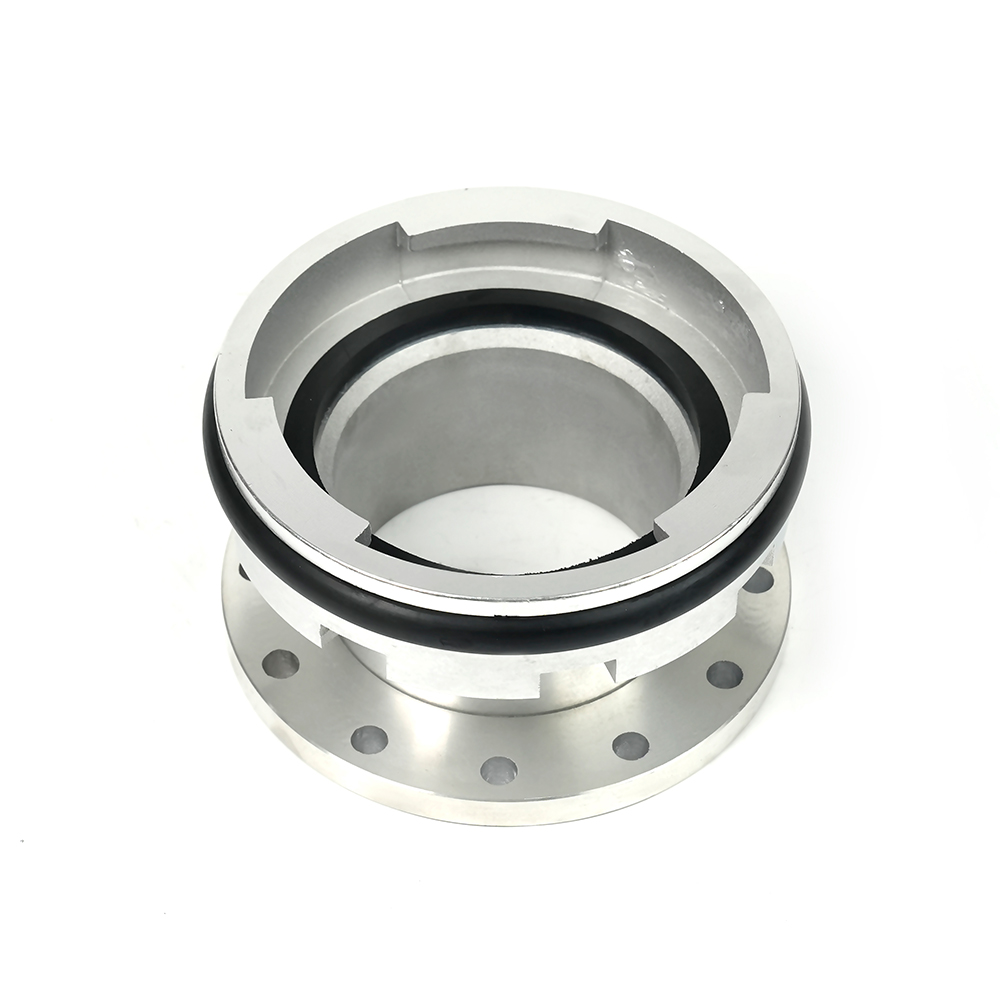 Machino Adapter Couplings – Flanged
Machino Adapter Couplings – Flanged
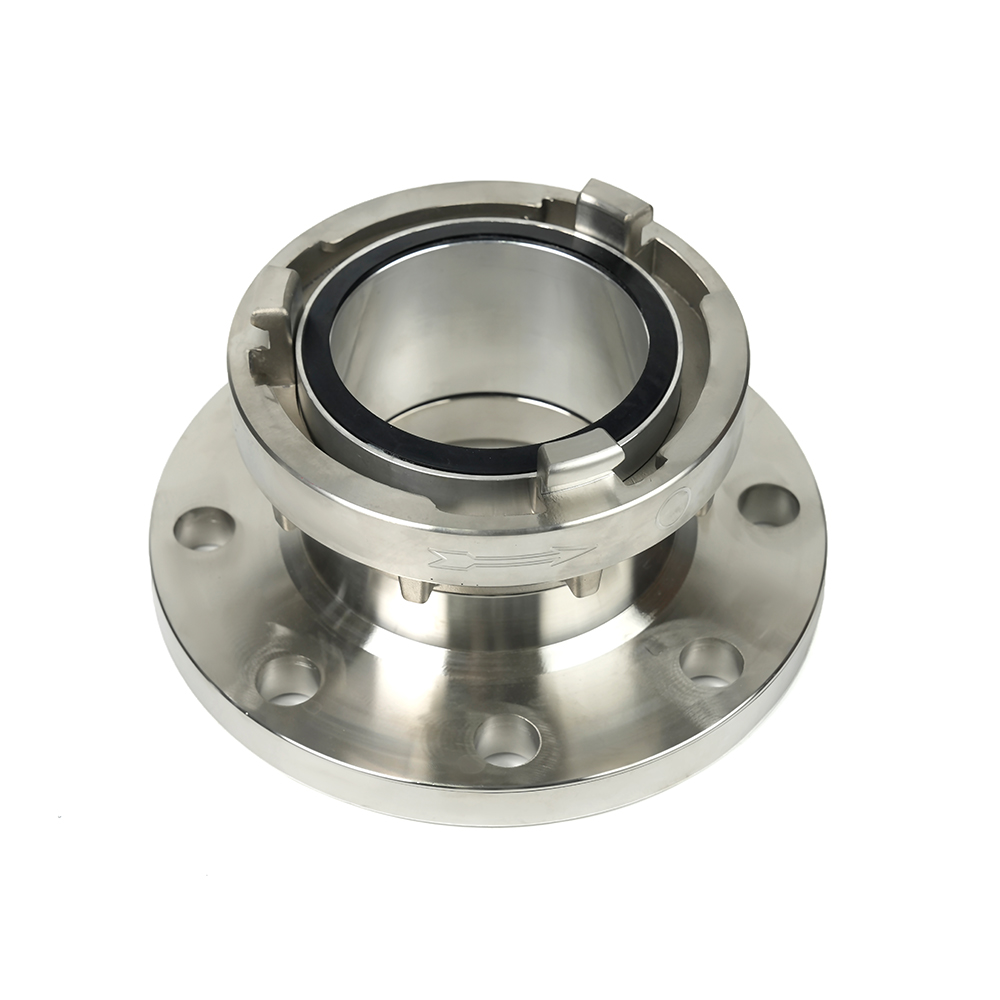 Storz Adapter Couplings – Flanged
Storz Adapter Couplings – Flanged